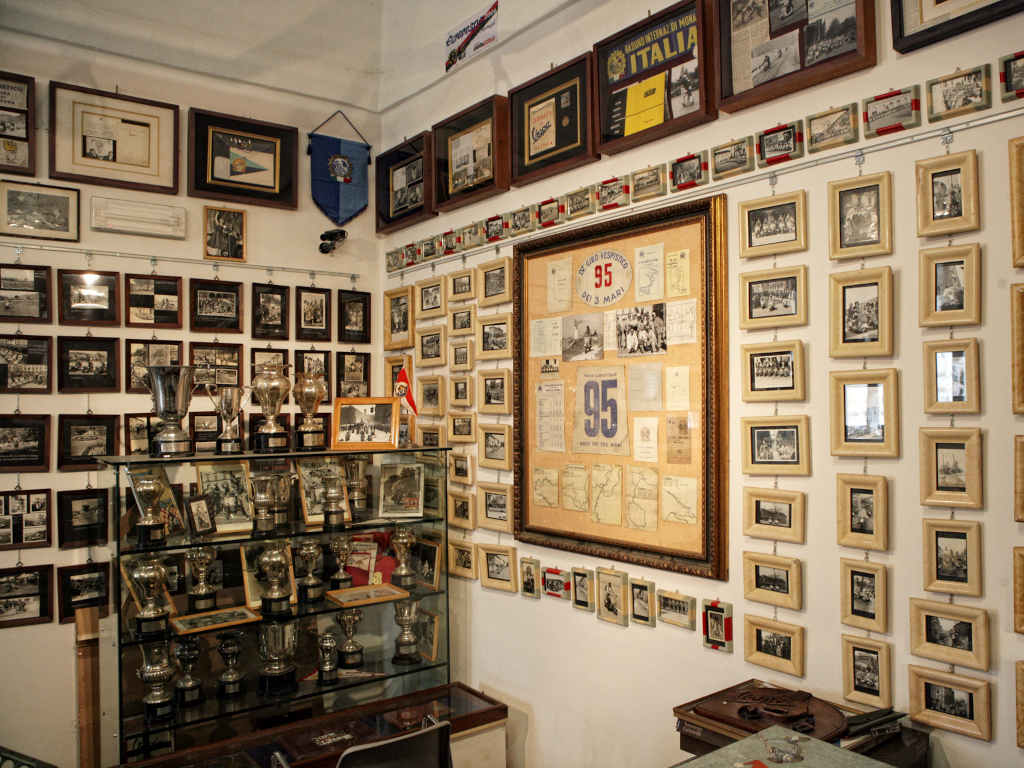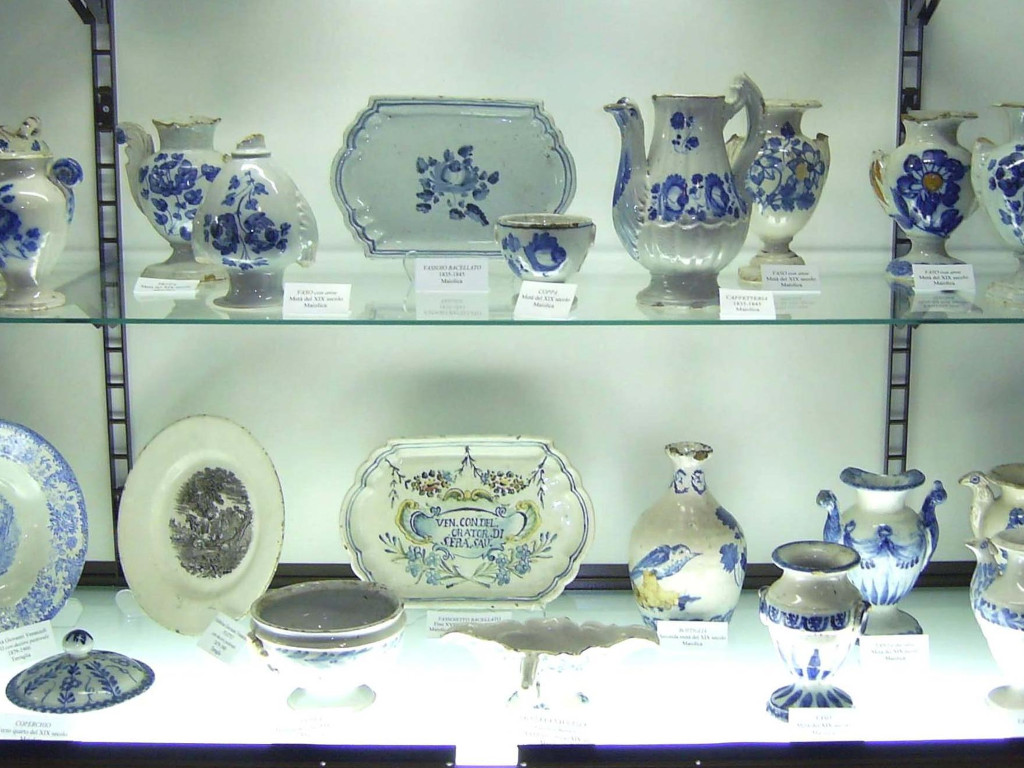
Vespa’s museum
This is a unique collection and it is conserved inside Palazzo Cento. It’s a great collection work, made with a lot of care by the citizen Marco Romiti and it lures visitors from all over Italy. In the exhibition rooms you will discover the Vespa‘s myth, thanks to the numerous vehicles in perfect conditions and all the objects connected to the Vespa Club World. By visiting this collection and admiring all the best Piaggio’s products, you will discover how Italy was living just after the Second World War: a period of reconstruction, difficult but with a lot of enthusiasm, with a rising economy and with a great desire of freedom that was travelling from north to south Italy… driving a Vespa.
Town Art Gallery
Inside of Palazzo Cento’s museum, you can find the Town Art Gallery. It is very representative concerning the most important painters in Pollenza and their artistic carrier. Here you can find as well canvas painted by other important artists that, even if they were not from Pollenza, lived for a few time in our territory and felt in love with it, and sometimes they painted it as well in their canvas.
The main nucleus of the museum concerns the accurate collections of two citizens: Giuseppe Fammilume and Don Nazzareno Buldorini who, since 1928 researched, catalogued and conserved objects, papers, documents and everything that could testify the historical evolution of the city. The museum’s collection has been enriched by donations from the heirs of the cardinal Fernando Cento and from the families Niccolai, Monti, Failla, and other citizens. There are as well some contemporary art paintings made by painters from Pollenza.

Palazzo Cento Civic Museum
The archaeological collection has been recently set up inside Palazzo Cento, a noble residence dated 16th century that conserves as well an interesting art gallery, a fine ceramics collection (produced in Pollenza between 1810 and 1905), vintage furniture and a peculiar crucifixes’ collection. The archaeological collection is situated in the first room, located at the first level, but before entering this room, you can find in the entrance corridor a feminine, headless and fragmented statue. The original structure is dated 16th century, but it has been renovated during the 17th and the 18th centuries, which had unavoidably changed its original aspect.
